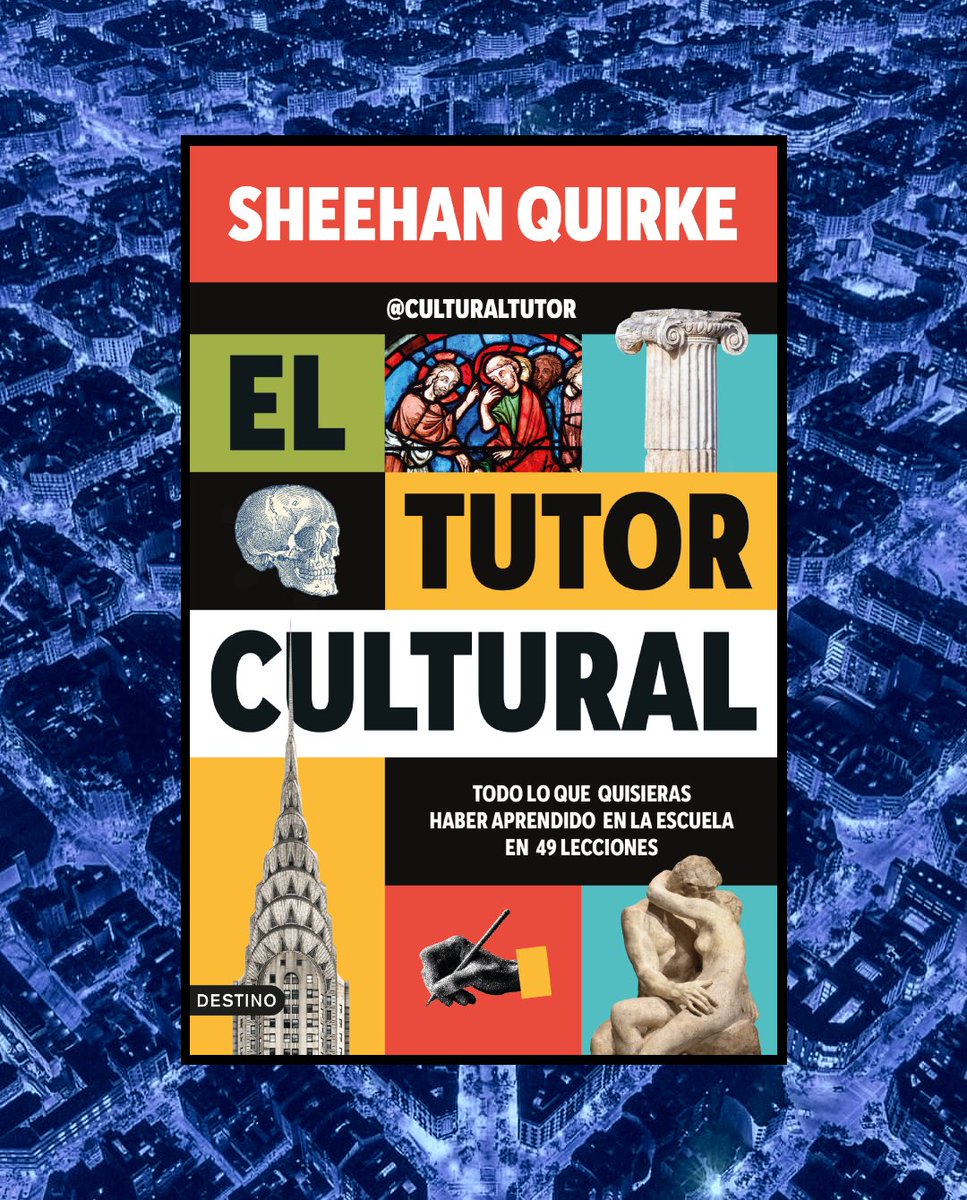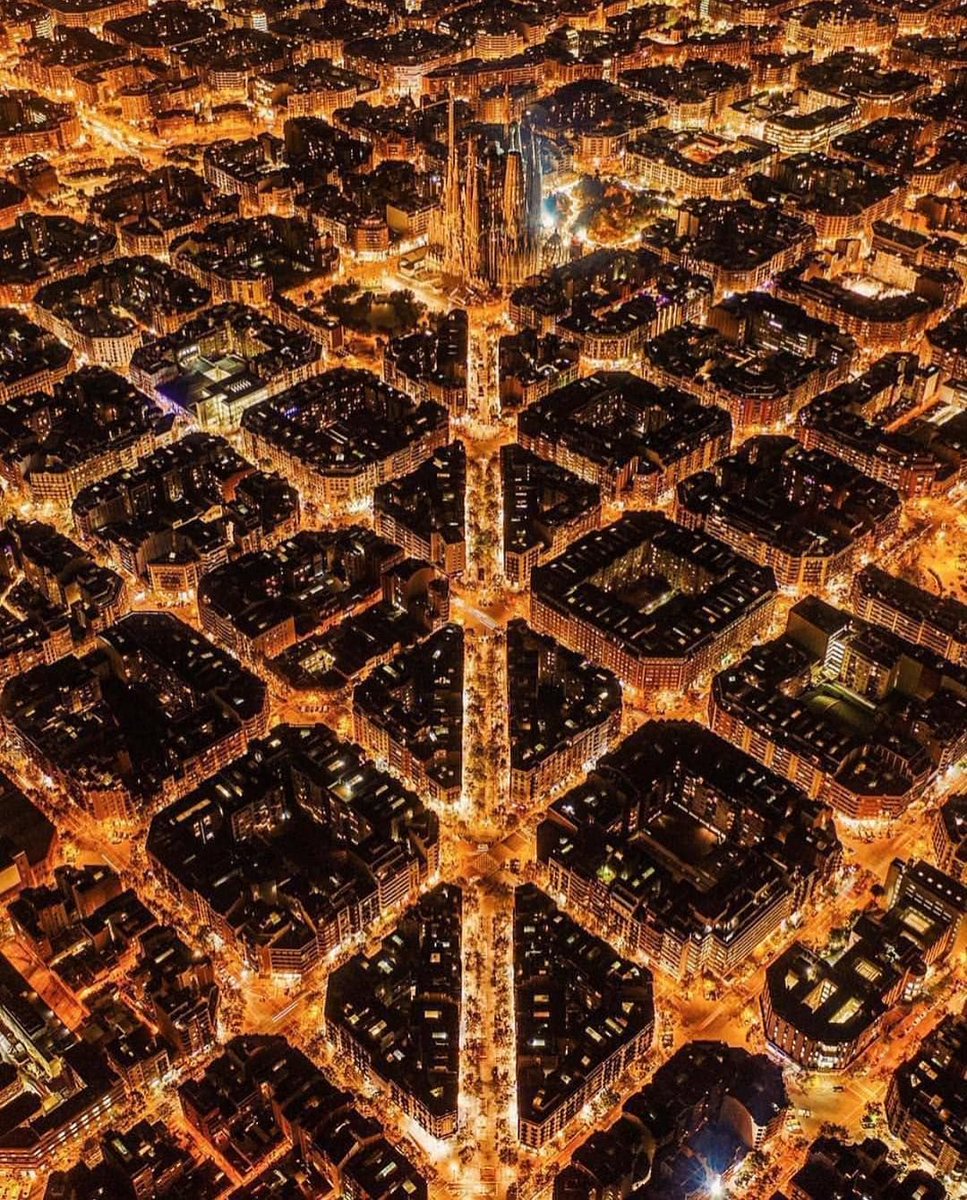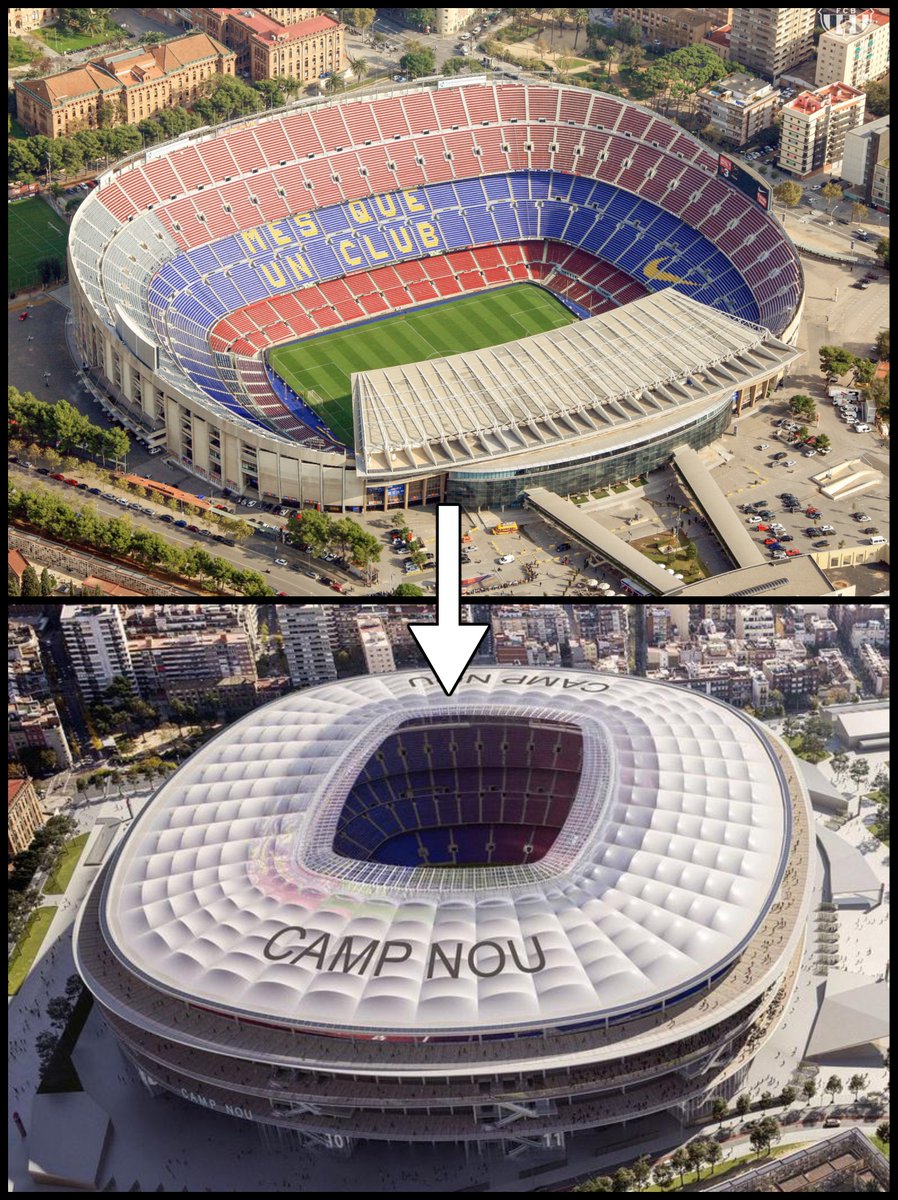One day in the year 1892, when Edvard Munch was going for a walk near Oslo, the sky turned blood red.
He went home and created one of the most famous works of art in history.
But what is The Scream screaming about?
He went home and created one of the most famous works of art in history.
But what is The Scream screaming about?

His first attempt at capturing this feeling was called Despair - notice the same framing, composition, characters, and skyscape.
It's a powerful image. But, more mellow than horrifying, it lacks the visceral, blistering, radioactive power of his masterpiece.
It's a powerful image. But, more mellow than horrifying, it lacks the visceral, blistering, radioactive power of his masterpiece.

And it doesn't have the defining feature of his final formulation - that famous face, barely human, a chilling vision of anguish.
Over the next two decades he made four more versions of The Scream, two of them pastel drawings, one a painting, and the other a lithograph.



Over the next two decades he made four more versions of The Scream, two of them pastel drawings, one a painting, and the other a lithograph.




Edvard Munch was born in Norway in 1863.
His youth was troubled by the death of his mother and sister, not to mention an oppressive father and a stifling upbringing.
At 17 he joined the Royal School of Art and Design in Kristiania (as Oslo was then known).
His youth was troubled by the death of his mother and sister, not to mention an oppressive father and a stifling upbringing.
At 17 he joined the Royal School of Art and Design in Kristiania (as Oslo was then known).

Munch was the archetypal modern artist, whose ideas were challenging and art provocative.
As a young man he fell in with Norway's most rebellious, anti-establishment group, led by the nihilist-anarchist Hans Jæger, a man who had been imprisoned for outraging public morals.
As a young man he fell in with Norway's most rebellious, anti-establishment group, led by the nihilist-anarchist Hans Jæger, a man who had been imprisoned for outraging public morals.

And Munch was something of an artistic chameleon.
Having first taken up painting during long bouts of illness as a child, he experimented with Impressionism during his twenties - in the early 1880s - but found it unsatisfying.
Having first taken up painting during long bouts of illness as a child, he experimented with Impressionism during his twenties - in the early 1880s - but found it unsatisfying.

For Impressionism, even while it moved art away from strict representations of reality and towards greater subjectivity, was still fundamentally about portraying the world as it looks.
It was about ever-shifting light and weather, hence Monet's waterlilies, different each time.
It was about ever-shifting light and weather, hence Monet's waterlilies, different each time.

What Munch sought was an outlet for his well of intense emotion - an artistic style suited to the expression of inner psychology rather than outward appearances.
He regarded The Sick Child, from 1886, as his first successful attempt at finding such a style.
He regarded The Sick Child, from 1886, as his first successful attempt at finding such a style.

But in 1889 Munch visited Paris, and it was transformative.
His long search for an artistic style to match his personal philosophy and troubled life experiences was over.
In Paul Gauguin and Vincent van Gogh, both Post-Impressionists, Munch found what he needed.
His long search for an artistic style to match his personal philosophy and troubled life experiences was over.
In Paul Gauguin and Vincent van Gogh, both Post-Impressionists, Munch found what he needed.
From Gauguin he learned that the world could be depicted in vivid, unnatural colours, and that any attempt at depicting the world as it truly appeared could be cast off entirely.
But what Munch realised, above all, was that colour could *become* emotion.

But what Munch realised, above all, was that colour could *become* emotion.


Munch's Golgotha, from 1900, seems like a clear reference to Gauguin's Yellow Christ.
Only here with Munch's hellish idiosyncracies, not least those faces, almost childlike in their simplicity but uncanny in their strangeness.
Only here with Munch's hellish idiosyncracies, not least those faces, almost childlike in their simplicity but uncanny in their strangeness.

And from van Gogh's art Munch learned that the appearance of the world could be melded to his feelings.
Munch painted his own versions of the Starry Night, one in 1893 and another in 1924. They are more subdued than van Gogh's, indicative perhaps of Munch's bleaker outlook.

Munch painted his own versions of the Starry Night, one in 1893 and another in 1924. They are more subdued than van Gogh's, indicative perhaps of Munch's bleaker outlook.


Munch returned to Kristiania from Paris and created Melancholy in 1891.
Gaugin's vivid colours and van Gogh's swirls are present here. But Munch did more than unite their styles; he introduced something new.
The world of his art was purely psychological.
Gaugin's vivid colours and van Gogh's swirls are present here. But Munch did more than unite their styles; he introduced something new.
The world of his art was purely psychological.
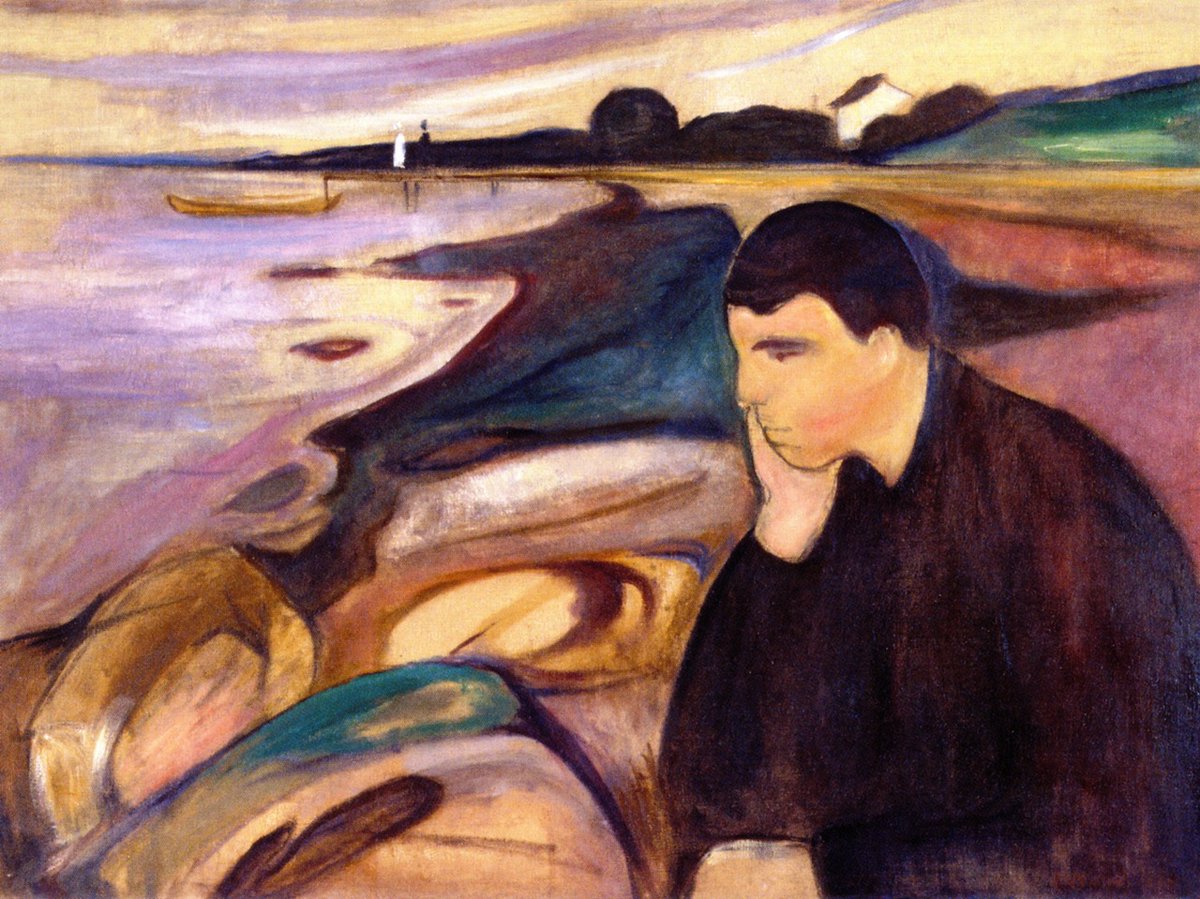
He painted several versions of Melancholy, each with slightly different colours and forms.
Munch simplified things over time, focussing more and more on the power of colour - whether vivid or mellow - letting his human figures become half-human.


Munch simplified things over time, focussing more and more on the power of colour - whether vivid or mellow - letting his human figures become half-human.



Munch had created a style which, more than ever before in art, expressed *emotion*.
The Romantics, the Impressionists, the Realists - none had gone quite this far.
His liquid figures melt before our eyes, burning up with the intensity of their feelings.
The Romantics, the Impressionists, the Realists - none had gone quite this far.
His liquid figures melt before our eyes, burning up with the intensity of their feelings.

The Scream represented for Munch the apotheosis of his search. A staunch anti-realist, what he painted was not the art of outward reality but of a state of mind.
One which has tentatively been called Symbolist, operating as it does on a metaphorical plane.
One which has tentatively been called Symbolist, operating as it does on a metaphorical plane.

Just one year after The Scream Munch created a painting called Anxiety, similar in composition and and colour, only this time the viewer is stared down by a crowd of those of those gaunt faces - a motif which would haunt much of Munch's art. 

He had an immense influence on Expressionism, which appeared in Germany in the early part of the 20th century.
It was, above all, his total embrace of colour and its power over mood - supplanting with its fluidity the real world - which so inspired them.
It was, above all, his total embrace of colour and its power over mood - supplanting with its fluidity the real world - which so inspired them.

Calling Munch Post-Impressionist, Symbolist or Proto-Expressionist might be accurate, and it might be useful in some ways.
But all these "isms" can obscure how unique and deeply personal his art was.
Does Self-Portrait In Hell need categorising? The painting speaks for itself.
But all these "isms" can obscure how unique and deeply personal his art was.
Does Self-Portrait In Hell need categorising? The painting speaks for itself.
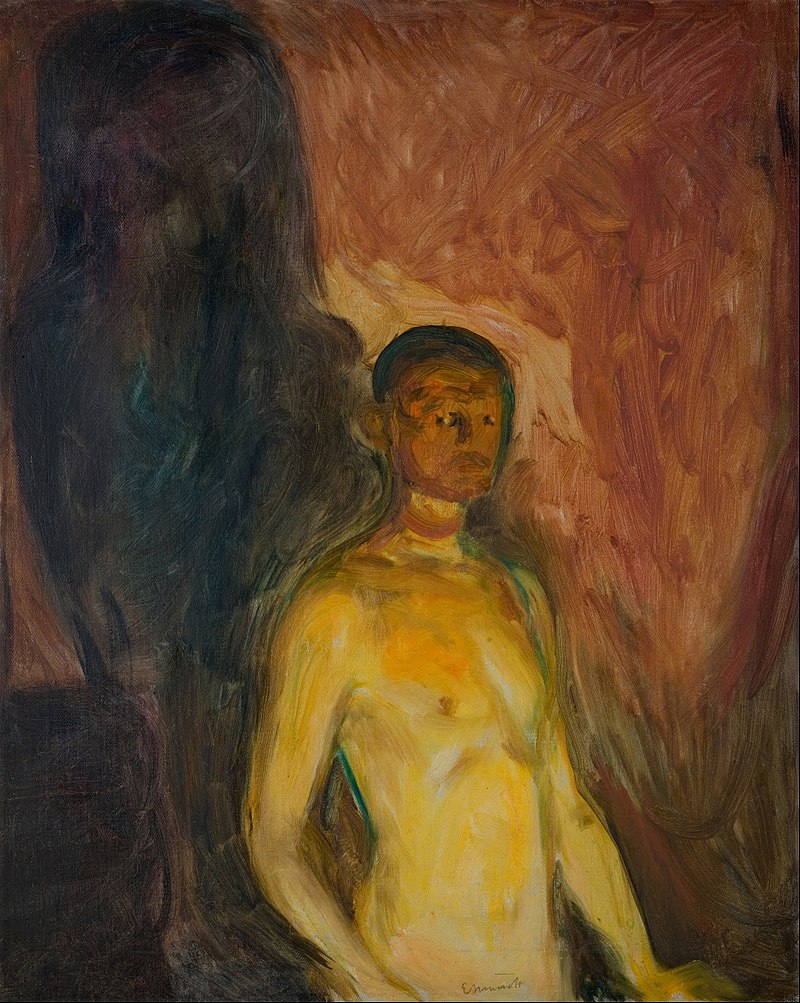
He lived for another fifty years after painting The Scream. It was a complicated life, filled with personal, psychological, social, and financial troubles.
But he never stopped painting, nor did his style ever stop evolving.

But he never stopped painting, nor did his style ever stop evolving.


Munch's art was classified as "degenerate" by the Nazis, who occupied Norway in 1940. In 1944 he died, aged eighty, a year before the occupation ended.
This is a self-portrait made in 1943, a time when his art was being hidden from Nazis and when his legacy was far from certain.
This is a self-portrait made in 1943, a time when his art was being hidden from Nazis and when his legacy was far from certain.

But Munch's legacy has survived, and The Scream might just be *the* definitive modern work of art, both in style and substance.
With its disinterest in outward reality and embrace of inner psychology, The Scream seems to capture the modern world in all its maddening complexity.
With its disinterest in outward reality and embrace of inner psychology, The Scream seems to capture the modern world in all its maddening complexity.
Munch's art was deeply personal, and yet it has become universal - a sort of prophecy for the century that would follow.
Each era has its defining works of art. Despite all that has been created since, does The Scream remain the ultimate modern painting?
Each era has its defining works of art. Despite all that has been created since, does The Scream remain the ultimate modern painting?

• • •
Missing some Tweet in this thread? You can try to
force a refresh

















